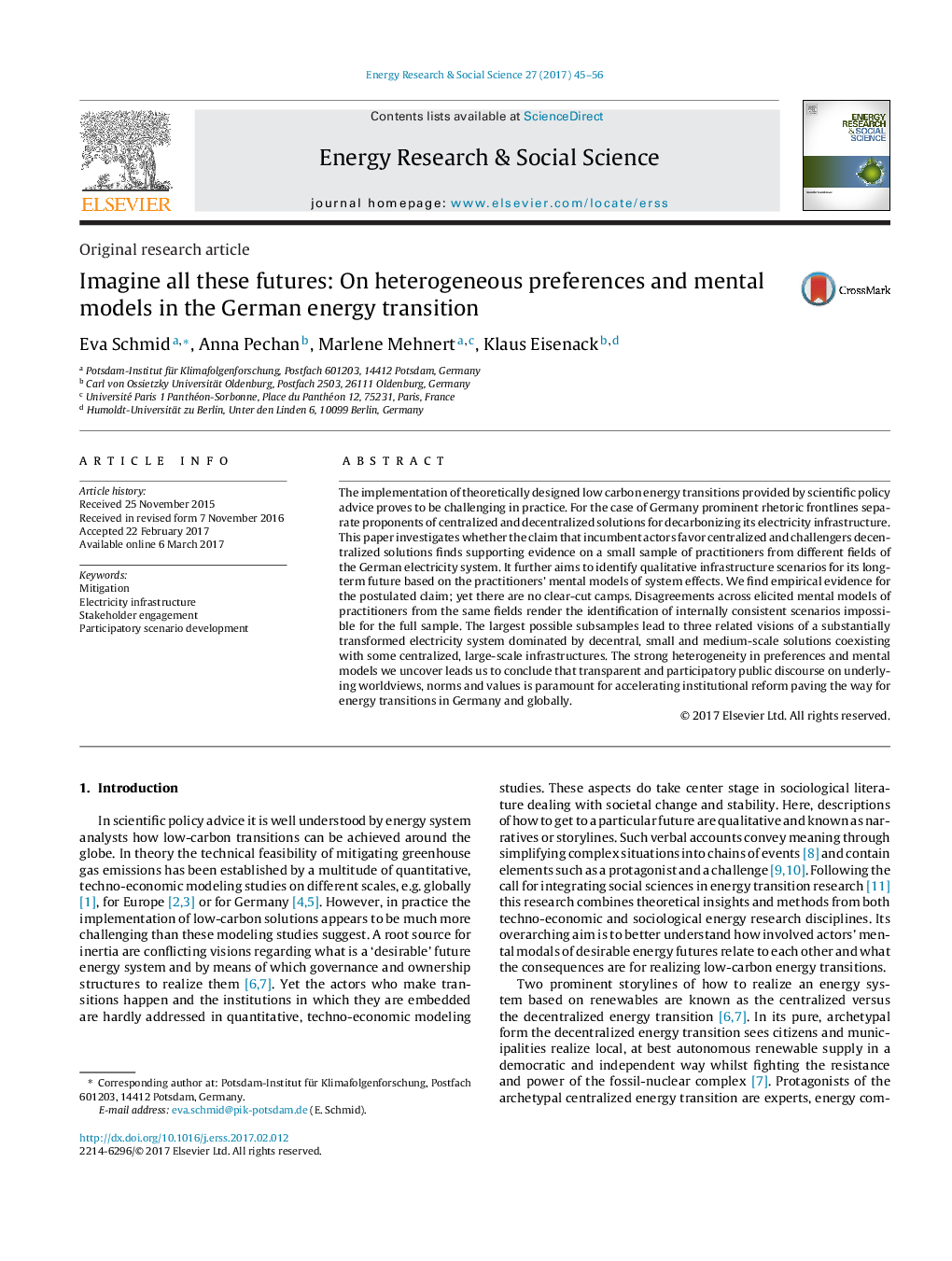| کد مقاله | کد نشریه | سال انتشار | مقاله انگلیسی | نسخه تمام متن |
|---|---|---|---|---|
| 6464031 | 1422574 | 2017 | 12 صفحه PDF | دانلود رایگان |
- We inquire on centralized versus decentralized solutions in energy transitions.
- We pursued telephone interviews with 26 German electricity system practitioners.
- They have vastly heterogeneous preferences and mental models on the Energiewende.
- Some evidence for incumbent (challenger) actors to prefer (de)centralized solutions.
- Results underline need for public discourse on implicit values and worldviews.
The implementation of theoretically designed low carbon energy transitions provided by scientific policy advice proves to be challenging in practice. For the case of Germany prominent rhetoric frontlines separate proponents of centralized and decentralized solutions for decarbonizing its electricity infrastructure. This paper investigates whether the claim that incumbent actors favor centralized and challengers decentralized solutions finds supporting evidence on a small sample of practitioners from different fields of the German electricity system. It further aims to identify qualitative infrastructure scenarios for its long-term future based on the practitioners' mental models of system effects. We find empirical evidence for the postulated claim; yet there are no clear-cut camps. Disagreements across elicited mental models of practitioners from the same fields render the identification of internally consistent scenarios impossible for the full sample. The largest possible subsamples lead to three related visions of a substantially transformed electricity system dominated by decentral, small and medium-scale solutions coexisting with some centralized, large-scale infrastructures. The strong heterogeneity in preferences and mental models we uncover leads us to conclude that transparent and participatory public discourse on underlying worldviews, norms and values is paramount for accelerating institutional reform paving the way for energy transitions in Germany and globally.
Journal: Energy Research & Social Science - Volume 27, May 2017, Pages 45-56
